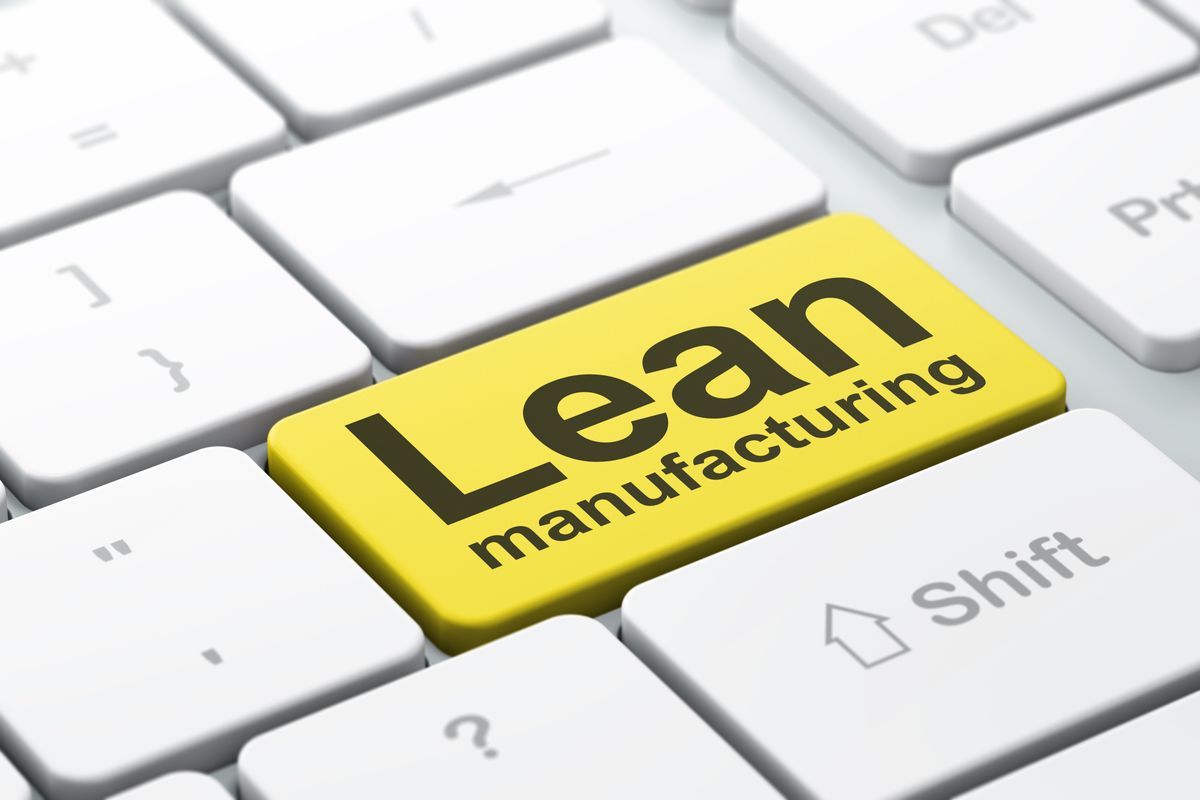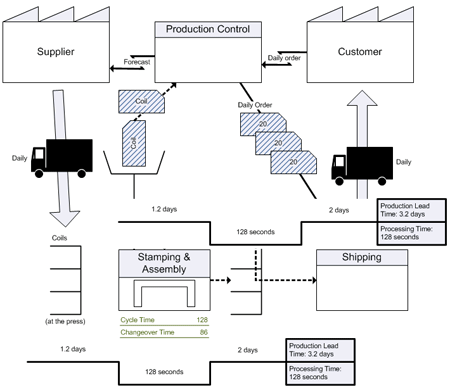How Lean Manufacturing Works

In order to sustain growth in a fast-paced environment, manufacturers need to ensure quality and efficiency above all else. Lean manufacturing is a leading innovation strategy that minimizes waste and thus increases the efficiency of production processes. Anything that doesn't add value to the customer is considered waste. But how does a lean manufacturing company manage its inventory? Let's take a look at what lean manufacturing is and how it can be applied to help you take the first step toward becoming a competitive manufacturer.
What it is
In addition to "thin," lean also means "uncluttered" and "sleek," so we can say that lean manufacturing is a way of producing products while eliminating waste during the manufacturing process.
Lean methodology doesn't just apply to the production process itself, but also to all processes such as procurement, transportation, shipping, finance, accounting, marketing, and sales. The purpose of lean manufacturing is to apply various strategies to save resources that would otherwise be wasted and to use those resources to improve the quality of the product.

When you hear the phrase "manufacturing without waste," is there an inventory management strategy that comes to mind? That's right, Just in Time (JIT) systems! We've talked about JIT many times on the BoxHero blog, and it's one of the most popular inventory management models. JIT minimizes inventory waste and other costs by adapting to the demand just-in-time.
What's the difference between JIT and lean manufacturing? In fact, JIT and lean manufacturing are philosophically identical, as JIT is a strategy that is applied to the production phase of lean manufacturing.
The basics of lean manufacturing
Companies that use lean manufacturing gain a competitive edge by producing quality products. They can also satisfy customers with fast deliveries because their products are made without unnecessary work processes or delays. Profitability is also improved because they strive to reduce costs throughout the production process, including reducing inventory costs through a JIT system. If you want to apply lean manufacturing to your business to improve quality and efficiency, follow these four steps! The goal is simple: "Focus on eliminating the clutter!"
1) Know what your customers want
To get rid of the clutter, you first need to identify the essence of your product. Once you know what you shouldn't have, you can quickly eliminate the rest of the clutter. The essence of your product is the answer to the question, "What do customers want?" Analyze what customers value when they pay for your product.
For example, customers buy Company A's product because they know they'll get it faster than their competitors, so the value of Company A's product is analyzed as time savings and speed. But what happens when you close and consolidate the logistics centers that enable fast delivery in order to reduce waste in the production process? In an effort to improve the process, you could end up compromising customer value.
This is why it's essential to understand the essence of your product before applying the lean manufacturing method. If you don't know what your customers want, consider conducting surveys at touchpoints such as email and social media to get their honest opinions.

2) Create a value stream map
Value stream mapping is a visualization of your production process using icons, pictures, and more. It allows you to intuitively review your production process and quickly identify problematic steps. There's a big difference between knowing something in your head and seeing it with your eyes. The key to creating a value stream map is to identify which steps add value to your product and which steps create clutter and waste. Again, it's important to look at every step of the way until your product is produced and reaches your customer.

3) Improve your process
Now it's time to fix the problems you've identified in your value stream map. Change your processes to minimize bottlenecks and delays in steps that add value, and eliminate steps that create clutter and waste.
For example, we worked with a company that was producing in batches as raw materials became available. Overproduction and overstocking were common, and defects were common due to the one-time, high-volume nature of the manufacturing process. If raw materials were not available, production was always on standby. The company created a value stream map and realized that mass production after bulk shipments of raw materials were the reasons that caused overproduction, overstock, defects, and queues, and decided to improve the value stream map. They decided to share their inventory status of raw materials and finished products with suppliers and only receive raw materials when the inventory falls below a certain level.
This kind of process improvement requires coordination with multiple parties involved in the production of a product, including suppliers, so if you're thinking about moving to lean manufacturing, it's a good idea to have a positive and friendly relationship with the people you work with.

4) Continuous improvement
Lean production is never a one-time thing - it's a repeat of step one to three. Even if you've improved your processes, new wastes may arise in other areas. It's also important to review whether your employees are learning and carrying out the changes you've made. If the people working on the floor aren't comfortable, it's time to revisit the process. Don't forget to keep an open channel for feedback from your customers. The value of your product to your customers can change at any time.
Toyota, the Japanese automaker that pioneered lean manufacturing and JIT systems, abandoned mass production to reduce waste in inventory, space, labor, and more. As a result, they've become a company that produces high-quality products centered around the value their customers want. If you're looking to become a manufacturer that delivers sustainable growth, take a cue from lean manufacturing and JIT systems!


